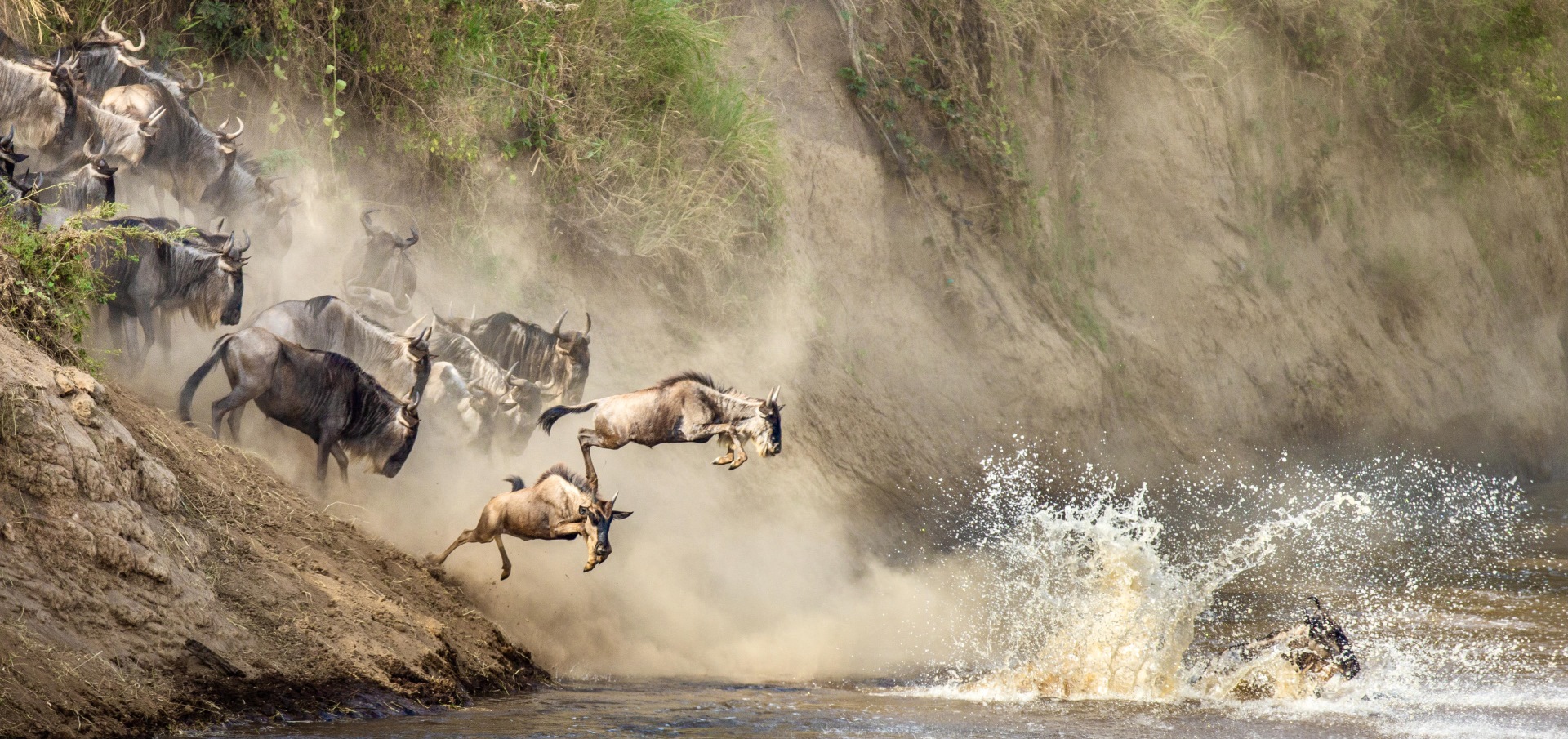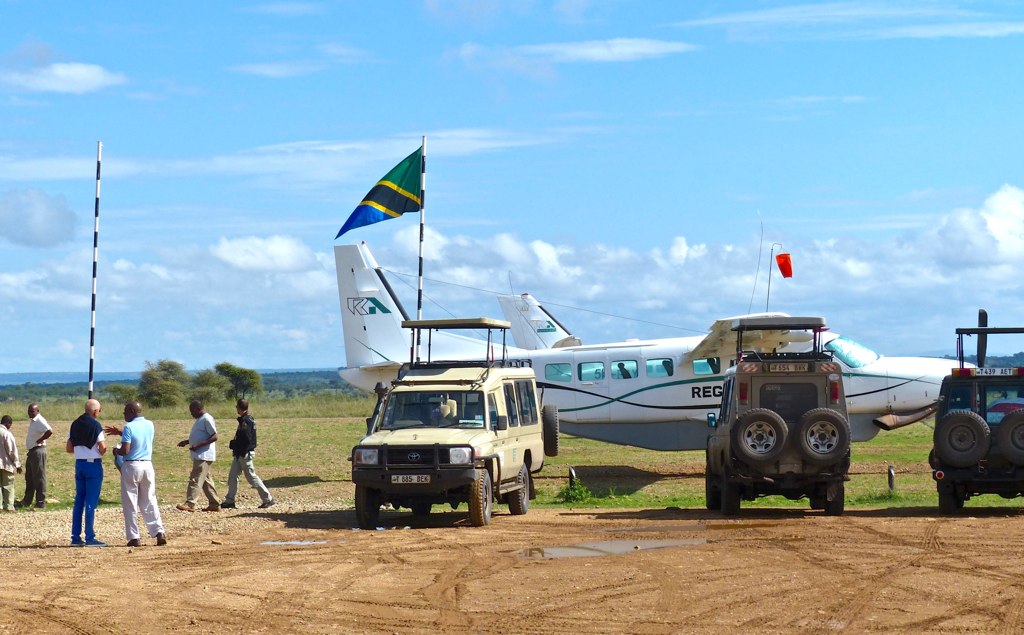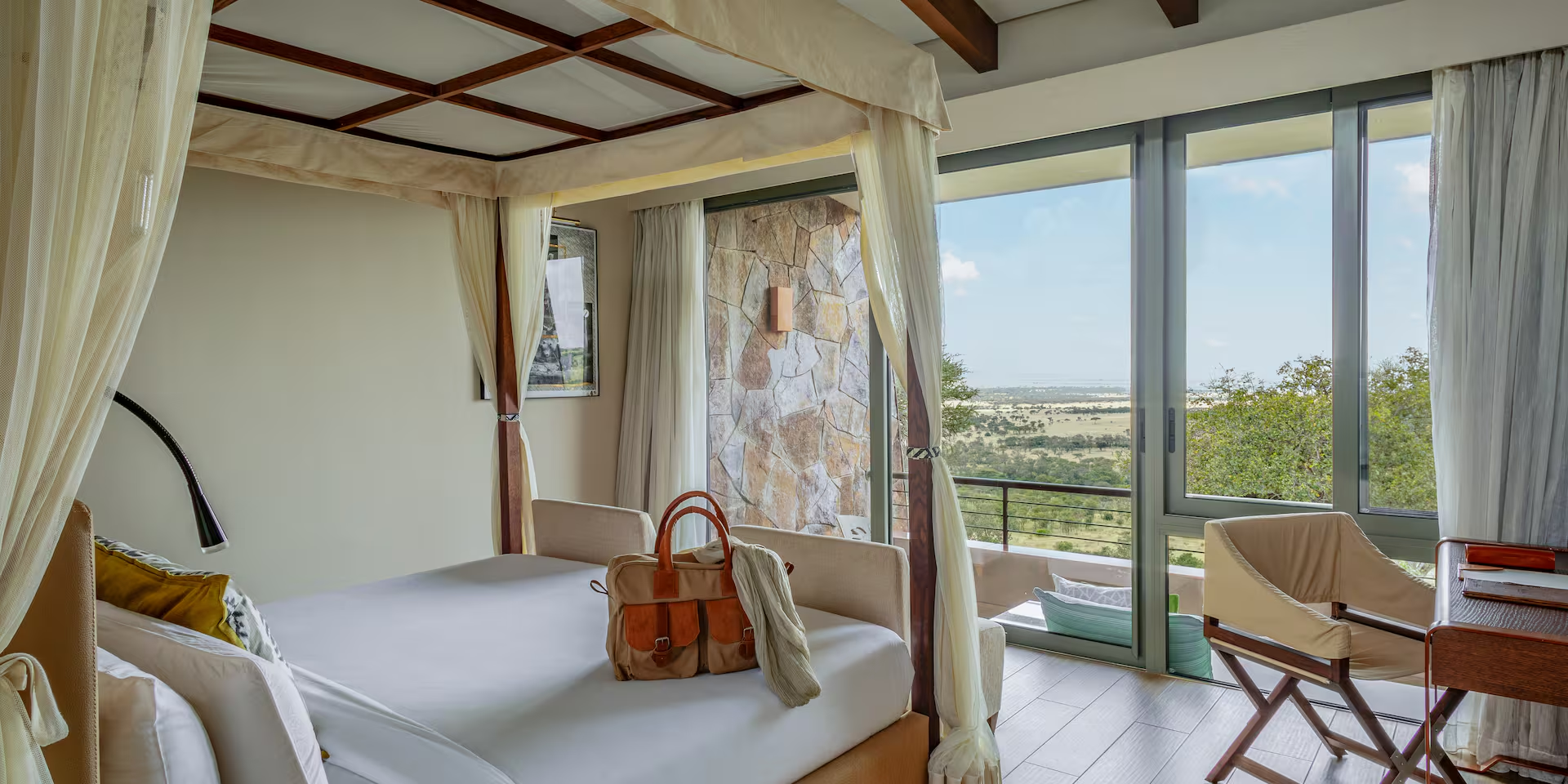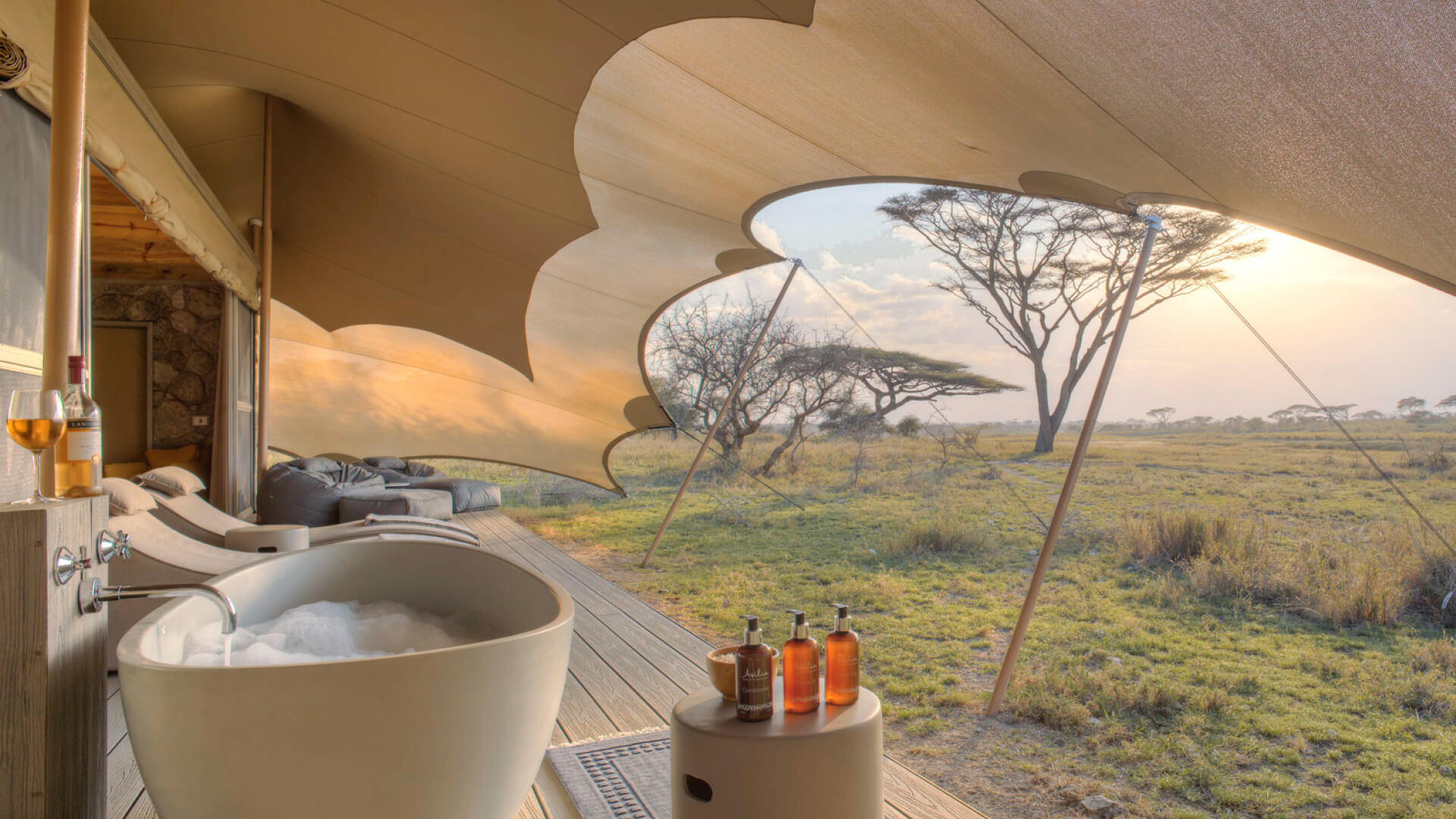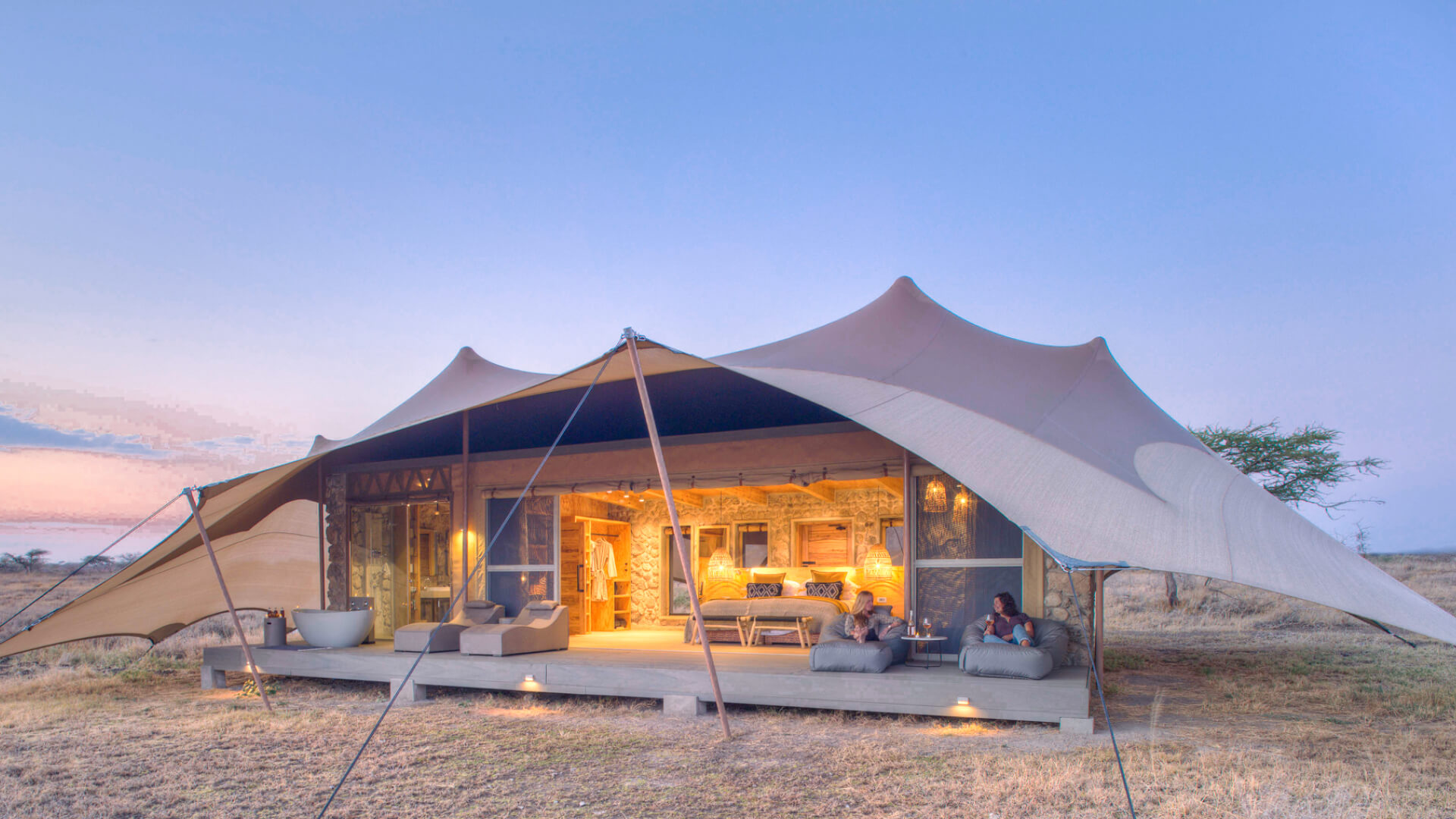Wildlife Highlights of the Serengeti
Serengeti’s wildlife is abundant, diverse, and unforgettable. Whether you’re tracking lions across golden plains or watching elephants at a watering hole, every moment here is raw and real — just the way nature intended.
The Big Five
Spotting the Big Five in Serengeti is a safari milestone. Watch lions roam in powerful prides, leopards drape themselves over acacia branches, elephants march through the woodlands, buffalo graze in herds, and black rhinos hide among the boulders of Moru Kopjes.
The Great Migration
Over 1.5 million wildebeest, alongside zebra and gazelle, surge across the Serengeti each year in search of greener pastures. Witness epic river crossings, hear thundering hooves, and experience the raw struggle for survival — a phenomenon best explored with our expertly guided safaris.
Predator Territory
Serengeti is a predator’s paradise. Lions dominate the landscape in large prides, cheetahs hunt in the open plains, and elusive leopards hide in the riverine woodlands. Hyenas, jackals, and crocodiles all play their part in this dramatic circle of life.
Rivers & Reptiles
Life-giving rivers like the Grumeti and Mara draw wildlife from every corner of the park. Massive Nile crocodiles lie in ambush during migration crossings, while pods of hippos wallow and grunt in the deep pools — a powerful reminder of nature’s contrasts.
Elusive & Endangered Species
Go beyond the obvious and discover rarities like the serval cat, bat-eared fox, aardwolf, and the critically endangered African wild dog. Conservation efforts in Serengeti aim to protect these vulnerable species and preserve the park’s delicate ecosystem.
Incredible Birdlife
With over 500 species, Serengeti is a birder’s dream. Spot dazzling lilac-breasted rollers, towering ostriches, martial eagles, and secretary birds strutting through the grasslands. Each season brings new sightings and spectacular photographic opportunities.

